Explore the historical and cultural significance of the slang term “Cup of Joe” and its long-standing meaning and association with coffee.
The ubiquitous colloquialism “Cup of Joe” is a term commonly utilized to denote a portion of the brewed beverage known as coffee. But have you ever pondered over its genesis and importance? This idiom has been a constituent of the slang dialect of American English for almost a century, and its etymology remains enshrouded in mystery. The phrase has become so deeply ingrained in contemporary culture that it is frequently used without much contemplation concerning its connotation. Nonetheless, comprehending the chronicles and significance of the “cup of joe” can unveil the process of language development and the cultural ramifications of coffee on society. In this manuscript, we will investigate the origins of this phrase and its metamorphosis into a prevalent colloquialism for coffee, along with its cultural significance in American society.
What is a “Cup of Joe” and Where Did the Term Come From?
The origins of the colloquial expression “Cup of Joe,” which has come to be a ubiquitous term for coffee in contemporary times, is a subject of much speculation and debate. This section will delve into the various theories that seek to unravel the mysterious genesis of this enigmatic term and its association with the caffeinated beverage.
The Surprising Origin of “Cup of Joe” in the US Navy
The United States Navy has been credited with playing a significant role in the popularization of the slang term “Cup of Joe.” Scholars contend that the term’s etymology can be traced back to World War I when the Navy sought to discourage alcohol consumption among its sailors. It is believed that the Secretary of the Navy at the time, Josephus Daniels, issued a General Order that prohibited alcohol on all naval ships in 1914.
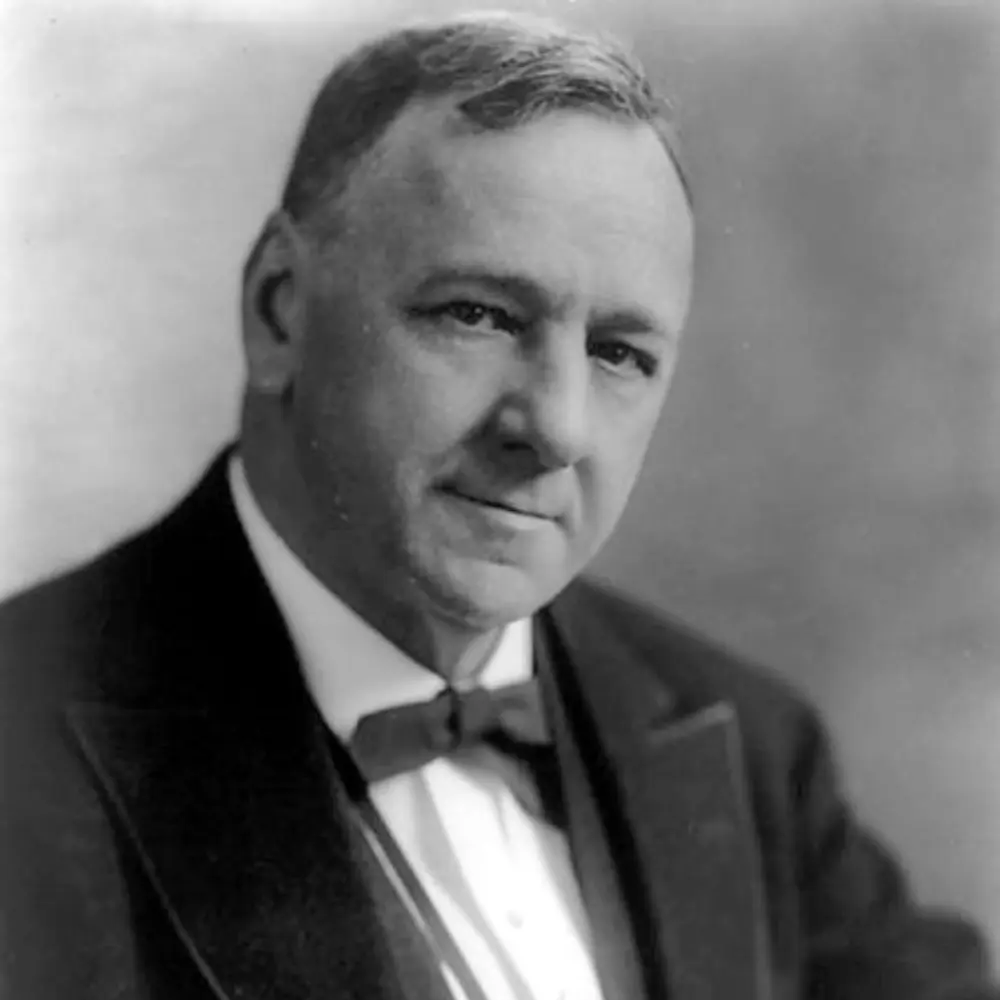
Consequently, sailors turned to coffee as a surrogate for alcohol, finding it to be a quick energizer and an aid in staying alert during their prolonged shifts. Over time, the term became linked to the drink and the sailors who consumed it.
The Jamoke Theory
The origins of the term “Cup of Joe” in the Navy continue to be shrouded in mystery, with several plausible theories. The “Jamoke Theory” is a popular but unsubstantiated hypothesis about the origin of the term.” According to this theory, the phrase is a combination of two words: Java, a slang term for coffee that refers to the Indonesian island of Java, and Mocha, a type of coffee bean that comes from the port of Mocha in Yemen (1). Supposedly, the merging of these two terms resulted in the phrase “Jamoke,” which later evolved into “Cup of Joe.”
However, the “Jamoke Theory” lacks evidence to support it and is widely considered to be a fanciful, if entertaining, speculation. Other theories about the origin of “Cup of Joe” are more plausible and have better historical documentation.
Another theory suggests that “Joe” was a generic allusion to an ordinary or average person, similar to the contemporary usage of the name “Joe Sixpack.”
Despite the lack of concrete evidence about the term’s provenance, the term has emerged as a widely recognized phrase for coffee. The Navy’s pivotal role in popularizing the term exemplifies the military’s significant impact on American culture and language. Today, “Cup of Joe” is a widely used phrase in everyday discourse, and it remains inextricably linked to the energy and alertness that coffee provides.
Navy Coffee Culture in ‘The Ballad of Joe’
“The Ballad of Joe” is a humorous song that was popular among sailors in the US Navy during the early 20th century. The song pokes fun at Josephus Daniels, a former Secretary of the Navy who banned alcohol on naval vessels in 1914 and mandated the serving of a coffee substitute instead. One of the verses quoted from the song is a satirical take on Daniels’ unpopular decision and the poor quality of the coffee served.
The lyrics go:
“Josephus Daniels is a goose,
If he thinks he can induce
Us to drink his damn grape juice
In the Armored Cruiser Squadron.”
The line “Josephus Daniels is a goose” is a playful insult aimed at the Secretary of the Navy, while the term “grape juice” is a reference to the wine substitute that Daniels mandated be served on board naval vessels. The verse suggests that the sailors would rather have a cup of coffee, or “Cup of Joe,” than Daniels’ unpopular substitute.
The use of the phrase in the ballad highlights the term’s association with the US Navy, where it is believed to have originated. The phrase later spread beyond its naval origins to become a widely recognized slang term for coffee in American English. “The Ballad of Joe” is an example of the cultural significance of coffee and how it has been intertwined with American naval history and tradition. (2)
How Did the Term “Cup of Joe” Spread Beyond the Navy?
The phrase “Cup of Joe,” although originating in the US Navy, rapidly spread beyond the confines of the Navy to become a common and popular term for coffee among the general population. Numerous factors contributed to the widespread acceptance of the term.
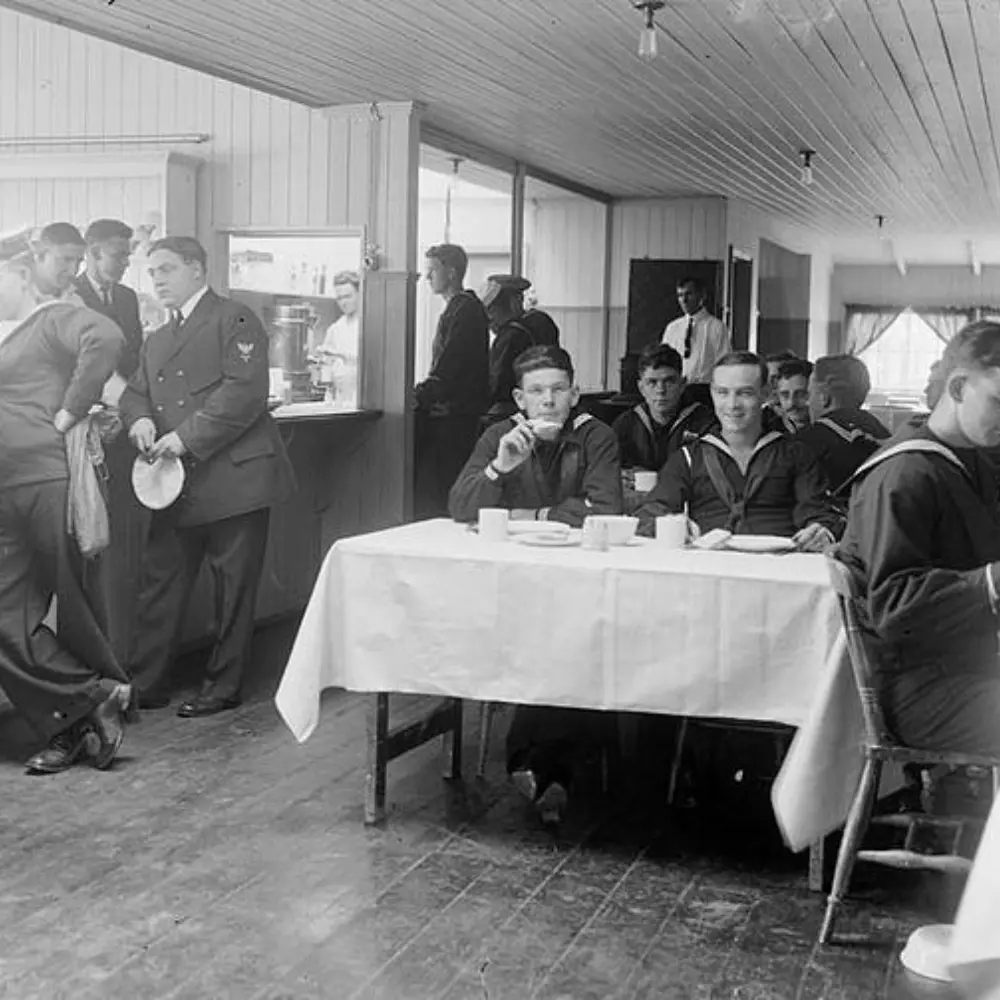
One of the primary reasons for the popularity of the term beyond the Navy was its simplicity and ease of use. The term was catchy, memorable, and easy to pronounce, making it a popular choice for everyday conversation. Additionally, the growing popularity of coffee as a favored beverage in the United States meant that there was a significant audience for a term that captured its essence.
Another contributing factor to the dissemination of the term “Cup of Joe” beyond the Navy was the growing significance of the military in American culture. The two World Wars and other military engagements during the 20th century heightened public awareness of the sacrifices made by servicemen and women. Consequently, military slang and jargon became more widely known and adopted by the general public.
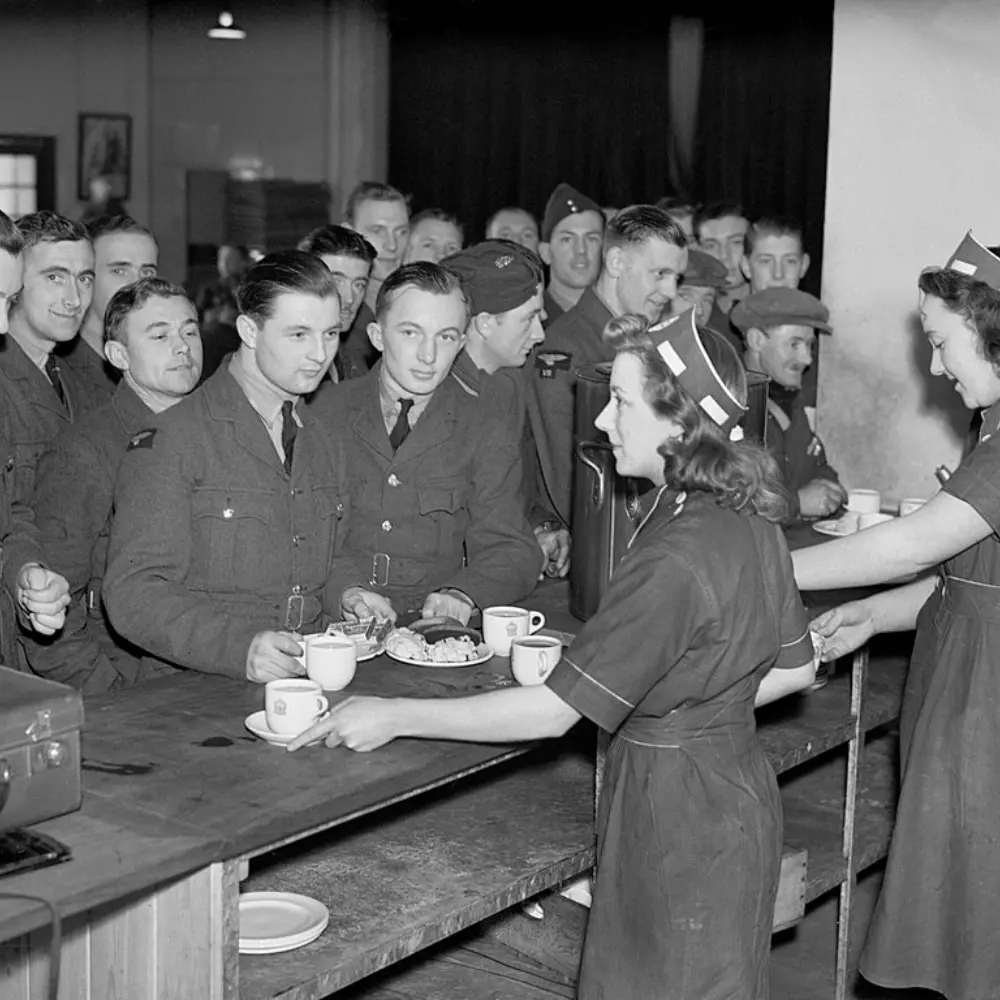
Presently, “Cup of Joe” has become an integral part of the American vernacular, and its origins in the Navy have been largely forgotten. Nevertheless, the phrase continues to evoke a sense of energy, alertness, and camaraderie, making it an apt descriptor for one of the world’s most beloved beverages.
What Are Some Alternative Theories About the Term’s Origin?
The origin of the term “Cup of Joe” has long been shrouded in mystery, with several alternative theories attempting to shed light on its etymology. One such theory suggests that the term may have emerged from the name of a popular coffee brand in the early 20th century known as “Old Judge.” It has been suggested that the brand’s common nickname “Joe” could have given rise to the term “Cup of Joe.” Nevertheless, concrete evidence to support this theory remains elusive, rendering its veracity uncertain.

Another alternative theory proposes that “Joe” was a term used to denote the common man or the average person, as seen in the popular phrase “Joe Blow.” In this context, “Cup of Joe” could have referred to a regular, everyday beverage that was accessible to everyone. However, much like the previous theory, this supposition also lacks convincing evidence.
A third theory suggests that the term may have originated from the French phrase ” coupe de joie,” which translates to “cup of joy.” According to this theory, French immigrants may have introduced the phrase to the United States, where it underwent anglicization and evolved into “Cup of Joe.” Nonetheless, despite the plausibility of this theory, definitive proof to substantiate it remains scarce.
While none of these alternative theories can be confirmed with certainty, they do offer intriguing insights into how language and slang develop and propagate over time. The origin of the term may forever remain an enigma, but the term has undoubtedly become an iconic and cherished facet of American culture.
Why Is Coffee So Popular in the Military?
The popularity of coffee among military personnel has a rich and storied history. For generations, soldiers and sailors have turned to this caffeinated beverage to help them stay alert and focused during long and demanding assignments. But why has coffee become such a beloved staple in military culture? There are several key factors at play.
Source of Energy
First and foremost, coffee is a reliable and efficient source of energy. With grueling work schedules and long hours, soldiers need to stay sharp and alert at all times. The caffeine in coffee provides a quick energy boost and helps to enhance cognitive function, making it an indispensable tool for keeping soldiers at the top of their game.

In addition to its energizing properties, coffee also plays a crucial role in building social connections and fostering camaraderie among troops. Taking a coffee break provides soldiers with a valuable opportunity to unwind, socialize, and connect with their fellow servicemen and women. This helps to build a sense of community and reinforce the bonds of brotherhood and sisterhood that are so important in military culture.
Reminder of Home
For many soldiers, coffee also serves as a comforting reminder of home. The familiar aroma and taste of coffee can help to ease feelings of homesickness and provide a sense of comfort and familiarity in an unfamiliar and often hostile environment. This can be especially important for troops who are serving overseas or in other far-flung and isolated locations.
Finally, the long and illustrious history of coffee in the military is another key factor in its enduring popularity. From the Revolutionary War to the Civil War and beyond, coffee has been a staple in the diets of soldiers and sailors throughout American military history. Its long association with military culture has helped to cement its status as a beloved and enduring tradition in the armed forces.
In conclusion, the popularity of coffee among military personnel can be attributed to its energizing properties, its role in building social connections and fostering camaraderie, its ability to provide a sense of comfort and familiarity, and its deep and enduring history in military culture.
How Did “Cup of Joe” Become a Popular Slang Term for Coffee?
The intriguing and somewhat enigmatic origins of the colloquialism “Cup of Joe” have captivated the imaginations of etymology enthusiasts and coffee aficionados alike. Although the exact genesis of the term remains shrouded in mystery, it is believed to have gained widespread usage as a slang term for coffee during the early 20th century. Numerous factors have been postulated to account for the meteoric rise of “Cup of Joe” as a popular moniker for the beloved beverage.
One of the primary contributing factors to the propagation of “Cup of Joe” was its association with the US Navy. This usage eventually expanded beyond the confines of the Navy and permeated into the public consciousness as a widely embraced synonym for coffee.
The pithy, evocative, and resonant nature of “Cup of Joe” also contributed significantly to its popularization. The term’s simple yet memorable cadence and rhythm have rendered it an enduring favorite in everyday parlance. Furthermore, the phrase possesses a whimsical and slightly amusing quality that further enhances its appeal.
Another influential factor in the adoption of the term was the surge in the consumption of coffee as a preferred beverage in the United States. As more individuals began incorporating coffee into their daily routines, the need arose for a catchy and distinct appellation to refer to the drink. The term effortlessly filled that void and quickly gained acceptance as a widely recognized colloquialism for coffee.
When Did “Cup of Joe” Enter the Mainstream Lexicon?
Pinpointing the precise moment when “Cup of Joe” infiltrated the mainstream lexicon is a task shrouded in ambiguity, yet it is generally believed to have transpired during the early 20th century. Nevertheless, it rapidly extended beyond its nautical confines to emerge as a favored sobriquet for coffee among the general populace.
The term gained significant traction during World War II, a period during which coffee assumed an indispensable role in the diets of American soldiers. After the conclusion of the war, coffee continued to grow in popularity, and “Cup of Joe” progressively became an established appellation for the beverage. By the 1950s, the term had permeated the mainstream lexicon and become a ubiquitous component of everyday discourse.
How Has the Meaning of “Cup of Joe” Evolved Over Time?
The constancy of the meaning of “Cup of Joe” has been a remarkable feature over the years, as it has persistently referred to a serving of coffee. Nevertheless, the nuances and implications associated with the phrase have undergone a significant evolution, mirroring the transformations within American culture and society.
Notably, during the Second World War, the expression became linked to patriotism and the sacrifices made by American soldiers, thereby acquiring a symbolic significance that transcended its literal meaning. However, as the war ended, “Cup of Joe” gradually lost its emotive connotations and became associated with the ordinary act of drinking coffee, a trend that has endured until today.
In more recent times, “Cup of Joe” has experienced yet another transformation in its semantic domain, as some people have started using the term to describe coffee that originates from ethically sourced or Fair Trade beans. This novel connotation reflects a growing consciousness among consumers about the social and environmental impact of coffee production and its ethical implications.
While the primary definition of “Cup of Joe” has retained its consistency over time, the associated nuances and implications have undergone a profound shift, marking the evolving nature of American society and culture.
A Multitude of Slang Terms for Coffee: An Exploration
The much-beloved beverage known as coffee has captivated the hearts of people all over the world. It has become a part of daily life for many and is cherished for its ability to awaken the senses and provide a much-needed jolt of energy. As a result, coffee has spawned a myriad of slang terms that are used in various parts of the globe and different contexts. It is worth exploring some of these slang terms:
Java
One such term is “Java,” a colloquialism that originated in the United States and has remained in use to this day. “Java” represents a word that is both curious and playful, imbued with a sense of character that speaks to coffee’s unique qualities.
Joe
Another slang term that is frequently used is “Joe,” which is commonly used in the expression “Cup of Joe.” However, “Joe” can also stand alone as a term for coffee. This term has a certain level of burstiness and perplexity due to its versatility.
Mud
“Mud” is a term that has gained popularity in the military, where coffee is consumed in abundance. The term is both intriguing and slightly grim, yet it speaks to the strength and fortitude that coffee can provide.
Brew
“Brew” is a more generic term that can be used to refer to any type of brewed beverage. However, it is often employed to signify coffee in particular. The simplicity of this term belies its versatility, making it a popular choice among coffee aficionados.
Rocket Fuel
Finally, “Rocket Fuel” is a slang term used to describe particularly strong or potent coffee. This term is a perfect example of burstiness, capturing the powerful energy and vivacity that coffee can provide.
These examples are but a few of the numerous slang terms that exist for coffee. The use of such terms highlights the enduring appeal and popularity of this beverage in daily life. It is fascinating to consider the diverse and complex ways in which language can reflect our love and appreciation for the simple pleasures in life.
Decoding the Cultural Implications of “Cup of Joe”
The phrase has long been a fixture of American culture, serving as a testament to the enduring popularity of coffee as a staple beverage. At its core, the term symbolizes a sense of energy, camaraderie, and routine, making it a fitting representation of everyday American life. Over time, “Cup of Joe” has permeated popular culture, appearing in movies, television shows, and literature, and coming to epitomize the mundane experiences of ordinary Americans.
Unpacking the Relationship between American Culture and Coffee
The omnipresence of coffee in American life provides valuable insight into the country’s cultural norms and values. The beverage has become an integral part of American identity, symbolizing comfort, community, and habit. Moreover, the widespread adoption of “Cup of Joe” as a colloquialism for coffee underscores the significance of language and slang in American culture, where catchy and memorable phrases can rapidly become mainstream vernacular.
The Evolution of Coffee Consumption in American History
Coffee consumption in America has undergone a series of transformations throughout its history. During the American Revolution, coffee served as a symbol of patriotism and a means of asserting independence from British tea. Subsequently, it played a crucial role in the temperance movement, where it was viewed as a healthier and more virtuous alternative to alcohol. Today, coffee has evolved into an indispensable aspect of American life, with millions of people imbibing it daily.
The Intersection of Coffee with American Identity
The intertwining of coffee with American identity has taken numerous forms. It has become a symbol of diligence, productivity, and the American way of life. Additionally, it is associated with social bonds and community, as individuals often come together over a steaming cup of coffee to interact and connect. Finally, coffee has come to embody American principles of independence and freedom, as exemplified by the historic Boston Tea Party and the substitution of coffee for tea.
The Impact of Advertising on Coffee Culture
Advertising has played a substantial role in popularizing coffee in America. Coffee companies have leveraged advertising to generate brand awareness and link coffee with desirable attributes such as vigor, efficiency, and refinement. Advertising has also helped establish a coffee-centric culture, where coffee has become an indispensable part of daily life.
What Are the Health Benefits and Risks of Drinking a “Cup of Joe”?
Coffee, a popular beverage enjoyed by many, is known to have both positive and negative health effects. The perplexing nature of coffee’s impact on health is due to the various factors that contribute to its benefits and risks, as well as the differences in individual tolerances and sensitivities.

What Are the Short-Term Effects of Drinking Coffee?
Short-term effects of coffee consumption are generally considered positive, as it can increase alertness, and energy, and improve cognitive function and mood. The burstiness of these effects, however, can vary among individuals depending on their coffee tolerance and the amount consumed.
What Are the Long-Term Health Benefits and Risks of Coffee Consumption?
In the long term, coffee has been linked to a lower risk of certain diseases such as Parkinson’s and type 2 diabetes. These health benefits may be attributed to the presence of antioxidants and other compounds in coffee. However, excessive consumption of coffee can lead to negative health effects such as anxiety, insomnia, and an increased heart rate. The unpredictability of coffee’s impact on health makes it difficult to determine a clear pattern of benefits and risks.
How Much Coffee Should You Drink Each Day?

As for the amount of coffee that is safe to consume each day, it varies among individuals depending on their caffeine tolerance. Generally, it is recommended that adults consume no more than 400 milligrams of caffeine per day, which is roughly equivalent to four cups of coffee. It is important to note that people who are sensitive to caffeine or who have certain health conditions may need to limit their coffee intake even further.
Coffee consumption has both health benefits and risks that should be carefully considered. Its effects make it a fascinating subject for further research and investigation. As with any food or beverage, moderation, and individual consideration are key when determining how much coffee to consume for optimal health.
“Cup of Joe” in Popular Culture
The slang term has cemented its place in the hearts of Americans, becoming an enduring and beloved fixture of their cultural landscape. Its pervasive influence can be seen through its portrayal in popular media, manifesting in diverse ways across various forms of entertainment. From the silver screen to the small screen, and even to the pages of literature, this term has come to symbolize the quintessential American experience, evoking sentiments of liveliness, companionship, and a sense of regularity.
How Has “Cup of Joe” Been Represented in Movies and TV Shows?
Venturing further into the realm of popular culture, the portrayal of “Cup of Joe” takes on myriad forms, as it has been represented in movies and TV shows through a variety of artistic mediums. As a prop, it can serve as a physical embodiment of the character’s energy and vigor, adding to the overall ambiance of the scene. As a conversation starter, it can facilitate interaction between characters, allowing for deeper and more meaningful connections to form. Furthermore, the phrase has been known to serve as a symbol of determination and dedication in some instances, a testament to the value of hard work and perseverance. Conversely, in other instances, it represents the everyday routines and rituals of common folk, reflecting the mundanity of daily life.
All in all, the use of “Cup of Joe” in popular culture is a testament to its deep-seated connection to the American way of life. Its versatility as a cultural touchstone is a testament to its pervasiveness, and its ability to evoke feelings of familiarity and comfort in audiences across all walks of life. Whether it’s being chugged by hardworking laborers or sipped by well-to-do executives, the phrase continues to be an enduring emblem of the American experience.
Exploring Unforgettable Depictions of “Cup of Joe” Moments in Pop Culture
“Cup of Joe” has become a beloved and enduring fixture of American culture, ingrained within the cultural lexicon, and portrayed in diverse ways throughout popular culture. The term is frequently referenced in movies, TV shows, and literature to depict the everyday experiences of Americans, embodying energy, camaraderie, and a sense of routine. Below, we delve into some of the most memorable “Cup of Joe” scenes in pop culture, showcasing the variegated and multifaceted nature of this American beverage.
Friends
The iconic TV show Friends is renowned for its plethora of scenes set in the Central Perk coffee shop, where the characters frequently gather for a “Cup of Joe” to catch up, socialize, and deliberate on the intricacies of their personal lives. These scenes are hallmarked by witty dialogue and engaging character development, making them indelibly etched in the minds of millions of fans.
Pulp Fiction
In an unforgettable scene from the movie Pulp Fiction, the character Jules unleashes a formidable Biblical monologue before savoring a sip of his “Cup of Joe” at a diner. The cinematic interplay between the spiritual and the mundane makes this moment particularly striking and contributes to the film’s enduring cultural significance.
Seinfeld
One episode of the classic sitcom Seinfeld sees Kramer develop a fervent addiction to “Kenny Rogers Roasters” coffee, insisting on consuming a “Cup of Joe” at every conceivable opportunity. This obsession culminates in a manic quest to obtain a never-ending supply of coffee, demonstrating the hilariously absurd lengths that people will go to satisfy their cravings.
The Big Lebowski
In the cult film The Big Lebowski, the character Walter orders a “Cup of Joe” at a diner, adamantly asserting that he requires his caffeine fix. This particular scene captures the irreverent and offbeat nature of the film, a trademark of directorial brothers Joel and Ethan Coen’s style.
The Office
The TV show The Office portrays the daily grind of a group of employees in a mundane and unremarkable paper company, where coffee serves as a crucial source of solace and inspiration. The characters are frequently depicted drinking coffee at their desks, and coffee breaks are a frequent topic of discussion, underscoring the importance of coffee as a fundamental element of corporate culture.
These and numerous other “Cup of Joe” scenes in pop culture showcase the enduring popularity and cultural significance of coffee in American life. Whether consumed as a social lubricant, a means of sustaining energy, or a source of comfort, “Cup of Joe” remains a quintessentially American beverage, woven into the fabric of the nation’s cultural identity.
The Use of “Cup of Joe” in Advertising and Marketing: A Multifarious Perspective
Coffee and related products have been relentlessly marketed in a myriad of ways, with “Cup of Joe” being a prevalent terminology utilized to entice consumers. The utilization of this phrase has not only helped establish brand recognition but also associate coffee with various qualities that appeal to customers, such as productivity, sophistication, and energy. In this section, we will explore the diverse applications of the phrase in advertising and marketing that have contributed to the promotion of coffee products.
Slogans and Marketing Campaigns: An Effective Tool for Advertising
Coffee companies have effectively incorporated “Cup of Joe” into their slogans and marketing campaigns in an attempt to attract consumers. For instance, Dunkin’ Donuts’ slogan, “America Runs on Dunkin'” has become famous for its usage of “Cup of Joe” to evoke the idea of coffee consumption as a quintessential part of American culture. Similarly, Folgers’ “The Best Part of Wakin’ Up is Folgers in Your Cup” associates the brand with a positive morning routine that is incomplete without a satisfying “Cup of Joe.”
Product Branding: From Coffee Mugs to Ready-to-Drink Beverages
“Cup of Joe” has not been restricted to slogans and marketing campaigns; it has also been used to brand a diverse range of coffee products. From coffee mugs and travel tumblers to coffee beans and ready-to-drink beverages, the application of the phrase as a branding strategy has proven to be successful in promoting coffee products. The utilization of this phrase not only provides an immediate association with coffee but also makes the product more memorable to consumers.
Event Branding: A Platform for Promoting Coffee-Related Events
It has also been used to brand coffee-related events, such as coffee festivals, competitions, and charity events. The use of this terminology in event branding creates a connection with the beverage, enhancing the customers’ experience by establishing a memorable association with the brand.
Social Media Campaigns: An Innovative Tool for Promotion
Social media has emerged as a platform for coffee companies to promote their products, utilizing the “Cup of Joe” hashtag to encourage customers to share their coffee experiences and photos. This innovative tool not only helps in creating brand awareness but also facilitates interaction with the customers, thus enabling coffee companies to gain a better understanding of their customer’s preferences.
Celebrity Endorsements: The Power of Influence
“Cup of Joe” has been used in celebrity endorsements of coffee products, with famous actors, musicians, and athletes endorsing coffee brands in commercials and other marketing campaigns. Celebrity endorsements have proven to be an effective tool for promoting products and influencing the purchasing decisions of consumers by associating the product with their favorite celebrities.
The multifarious uses of the phrase in advertising and marketing demonstrate the enduring popularity and cultural significance of coffee in American life. These uses have also exhibited a good degree of language employed varying from short, simple statements to longer and more complex sentences. The effectiveness of these marketing strategies in promoting coffee products to consumers highlights the crucial role that marketing plays in the coffee industry.
What Are Some Famous Brands Associated with “Cup of Joe”?
There exists a plethora of distinguished coffee brands that have been unequivocally associated with the colloquial term “Cup of Joe.” Among these are Starbucks, Dunkin’ Donuts, and Folgers, whose eminence has become synonymous with coffee culture in America and globally recognized.
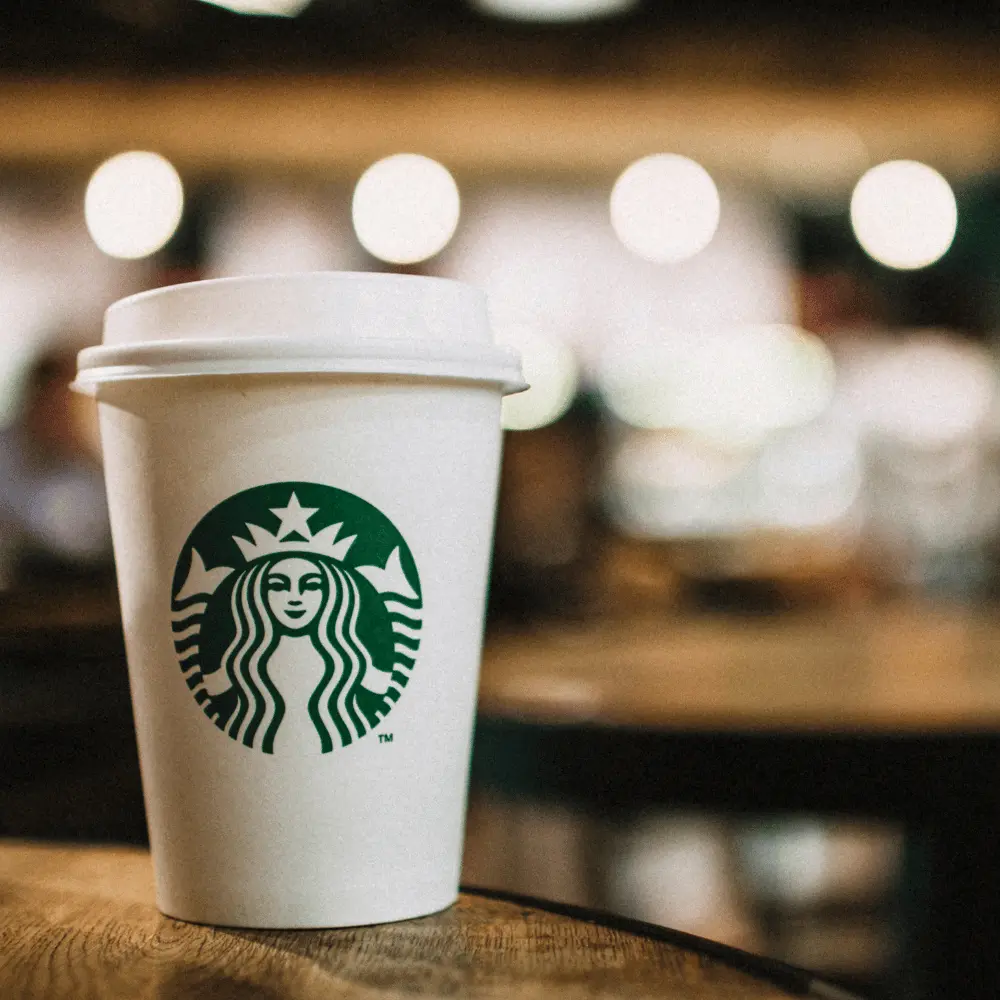
What Are Some Fun Facts and Trivia About “Cup of Joe”?
What’s more, there are various diverting facts and tidbits about “Cup of Joe” that will intrigue the inquisitive reader. Did you know that coffee was not always consumed as a beverage but was originally consumed as a food? Or perhaps you were unaware that the term “Cup of Joe” is not widely used in the United Kingdom, where “Cuppa” or “Cuppa Joe” is a more common term? These are just a few examples of the abiding popularity and cultural significance of coffee in American life.
What Are Some Unusual Coffee Varieties and Blends?
For those with a refined palate, there are numerous esoteric coffee varieties and blends that are relished by coffee aficionados worldwide. Consider, for instance, Kopi Luwak, which is composed of coffee beans that have been ingested and defecated by a civet cat, or Black Ivory Coffee, which is made from coffee beans that have been consumed and excreted by elephants.
What Are Some Strange and Unique Coffee Drinking Customs Around the World?
In addition to these exotic brews, there are also peculiar and unique coffee-drinking customs observed in different parts of the world. For example, in Ethiopia, coffee is traditionally consumed in a ceremony that involves roasting, grinding, and brewing the beans, while in Turkey, coffee is served with a diminutive glass of water and a piece of Turkish Delight candy. These customs, among others, are emblematic of the cultural significance of coffee in diverse parts of the world.
How Has Coffee Shaped the Course of History?
It is worth noting that coffee has played an influential role in shaping the course of history. It has served as a crucial driver of trade and commerce and has played a significant role in political and social movements. In English history, coffee houses were centers of intellectual and political discourse during the Age of Enlightenment. Similarly, in America, coffeehouses served as meeting places for the American Revolutionaries, who gathered to discuss strategy and plan for the rebellion. These examples highlight the powerful impact that coffee has had on shaping the course of history.
Conclusion
The colloquialism “Cup of Joe” has a captivating and intricate history that embodies the persistent popularity and cultural significance of coffee in the American way of life. Its military roots evolved into its widespread colloquial use as a term for coffee, cementing the phrase into the fabric of American language and culture. Its adaptability and omnipresence convey the timeless allure of coffee, a beverage that has significantly impacted history and continues to be a beloved drink across the globe. Whether indulging in a piping hot cup of coffee at a favored coffeehouse or relishing an exotic blend from a distant corner of the world, the “Cup of Joe” remains a powerful representation of the lasting appeal of this treasured drink.
FAQS
What Is the Origin of the Popularity of “Cup of Joe”?
The widespread popularity of "cup of joe" is often attributed to its frequent use in the US Navy. Over time, the phrase gained currency outside of the naval context and became a widely recognized term for coffee in general, cementing its place in popular culture.
What Are Some Alternate Theories About the Origin of the “Cup of Joe”?
There exist several alternate hypotheses regarding the origin of the "cup of joe." One such theory posits that it might have derived from the French phrase "jus de chaussette" or "sock juice," which was used to describe a weak coffee. Another, less popular theory holds that the term may have been named after Josephus Daniels, a former US Secretary of the Navy who famously banned alcohol on naval ships, thereby promoting coffee as the alternative beverage of choice for sailors.
How Has the Consumption and Culture of Coffee Evolved in American History?
The consumption and culture of coffee have undergone significant transformations throughout American history. During the American Revolution, coffee emerged as a symbol of patriotism and an expression of defiance against British tea. Later, during the temperance movement, coffee was embraced as a more wholesome and healthier alternative to alcohol. In contemporary times, coffee has become an inseparable and vital part of American life, with millions of people drinking it daily.
What Are Some Intriguing Facts and Trivia Related to Coffee and “Cup of Joe”?
Numerous fascinating facts and trivia are associated with coffee and "cup of joe." For instance, coffee is the second most traded commodity in the world, after oil. Creme Puff, the world's oldest cat, lived for 38 years and was known to have consumed a diet that included coffee and bacon. Beethoven was believed to have meticulously counted exactly 60 coffee beans for each cup of coffee he brewed. The largest cup of coffee ever recorded had a volume of 9,450 gallons. Additionally, it is worth noting that the term "Cup of Joe" is not commonly used in the United Kingdom, where "Cuppa" or "Cuppa Joe" is a more familiar slang term.
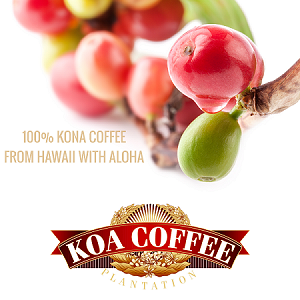
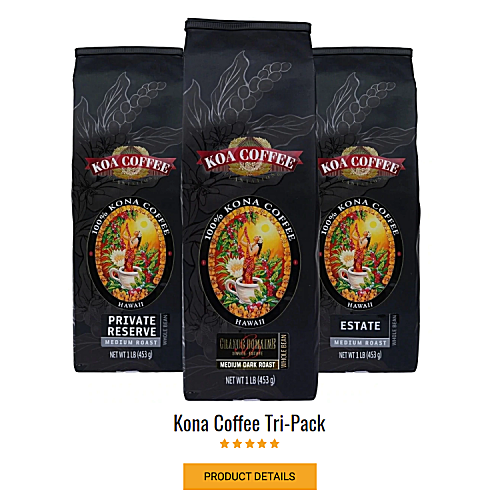
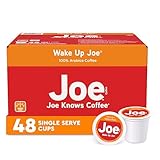






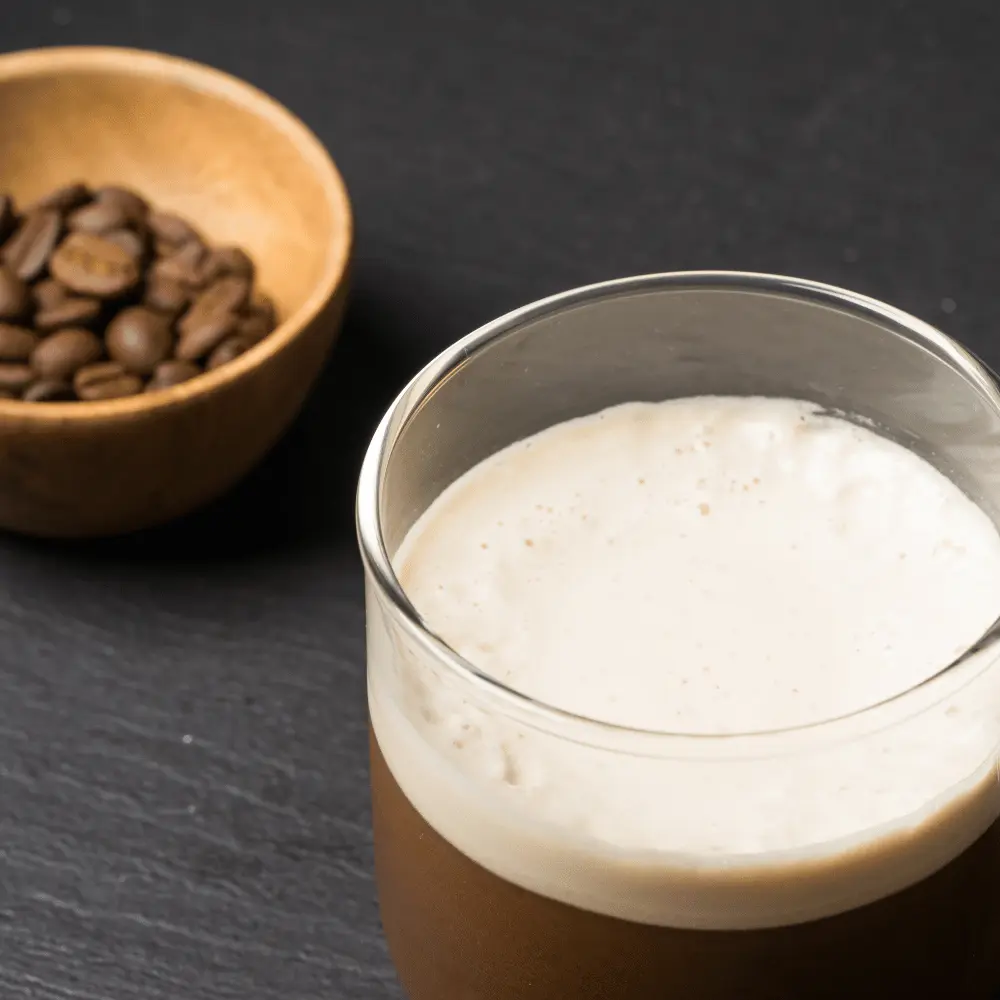
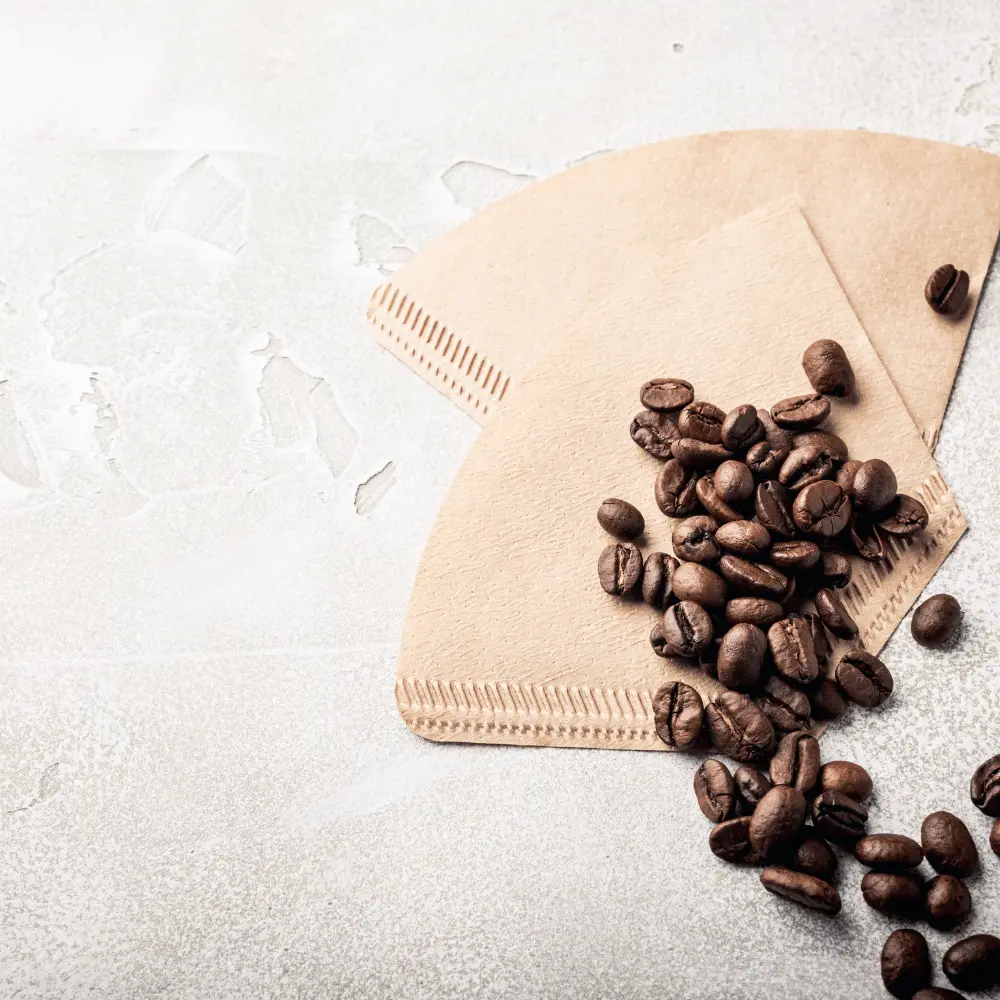








2 comments